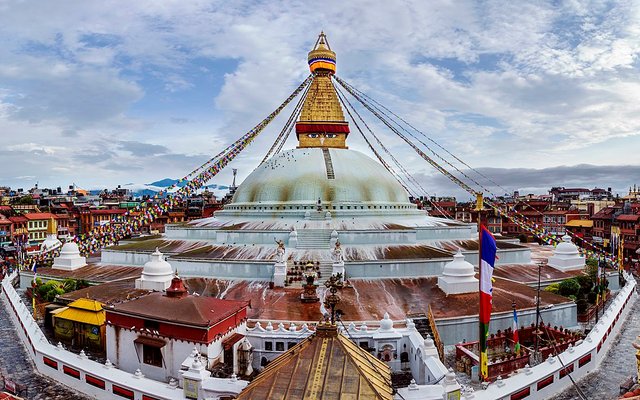Boudha Stupa
Boudha Stupa, also known as Boudhanath Stupa, is one of the largest and most significant Buddhist monuments in the world, located in the northeastern outskirts of Kathmandu, Nepal. Here’s a detailed description of Boudha Stupa:
Historical and Cultural Significance
Historical Roots: The stupa dates back to the 5th century and is a UNESCO World Heritage Site. It is believed to have been built shortly after the death of the Buddha.
Cultural Hub: Boudha Stupa serves as a focal point for Tibetan Buddhism in Nepal and is a pilgrimage site for Buddhists from around the world. It also plays a crucial role in the daily religious life of the local Tibetan and Nepali communities.
Architectural Features
Massive Dome: The central feature of the stupa is its massive white dome, which represents the vastness of the universe. The dome is constructed of brick and mud and is painted white, symbolizing purity.
Harmika: On top of the dome sits a square structure known as the harmika, which is said to represent the eyes of the Buddha, looking in all four cardinal directions. These eyes are often referred to as the "Eyes of Buddha," symbolizing wisdom and compassion.
13 Tiers: Above the harmika, there are 13 gilded steps or tiers, which represent the 13 stages on the path to enlightenment in Buddhist philosophy.
Umbrella or Canopy: The top of the stupa is crowned with an umbrella, or canopy, signifying the final stage of enlightenment.
Spiritual and Symbolic Elements
Prayer Flags: Colorful prayer flags, inscribed with sacred texts, are strung from the stupa to surrounding structures. These flags are believed to spread prayers and mantras with the wind.
Mani Wheels: Surrounding the base of the stupa are rows of prayer wheels, which devotees spin while circumambulating the stupa in a clockwise direction. Each spin of a prayer wheel is considered as effective as reciting the mantras inscribed on them.
Mandala: The stupa's design is a three-dimensional mandala, which is a geometric figure representing the universe in Hindu and Buddhist symbolism.
Surroundings
Monasteries and Shops: The area around Boudha Stupa is home to numerous monasteries, shops, and restaurants. Monasteries offer a glimpse into Tibetan Buddhist practices and teachings.
Pilgrims and Tourists: The stupa attracts a mix of pilgrims performing their rituals and tourists exploring its beauty and spiritual atmosphere.
Rituals and Festivals
Circumambulation: Pilgrims and visitors walk around the stupa clockwise, often chanting prayers and spinning prayer wheels.
Festivals: The stupa is particularly lively during Buddhist festivals such as Losar (Tibetan New Year), when it becomes a center of vibrant celebrations and religious activities.
Conservation
Restoration Efforts: Boudha Stupa has undergone several restorations, especially after the 2015 earthquake in Nepal, which caused significant damage. Conservation efforts ensure the stupa remains a revered and enduring symbol of Buddhist heritage.
Boudha Stupa stands as a testament to the enduring legacy of Buddhism in Nepal and its profound influence on the culture, spirituality, and architecture of the region.
